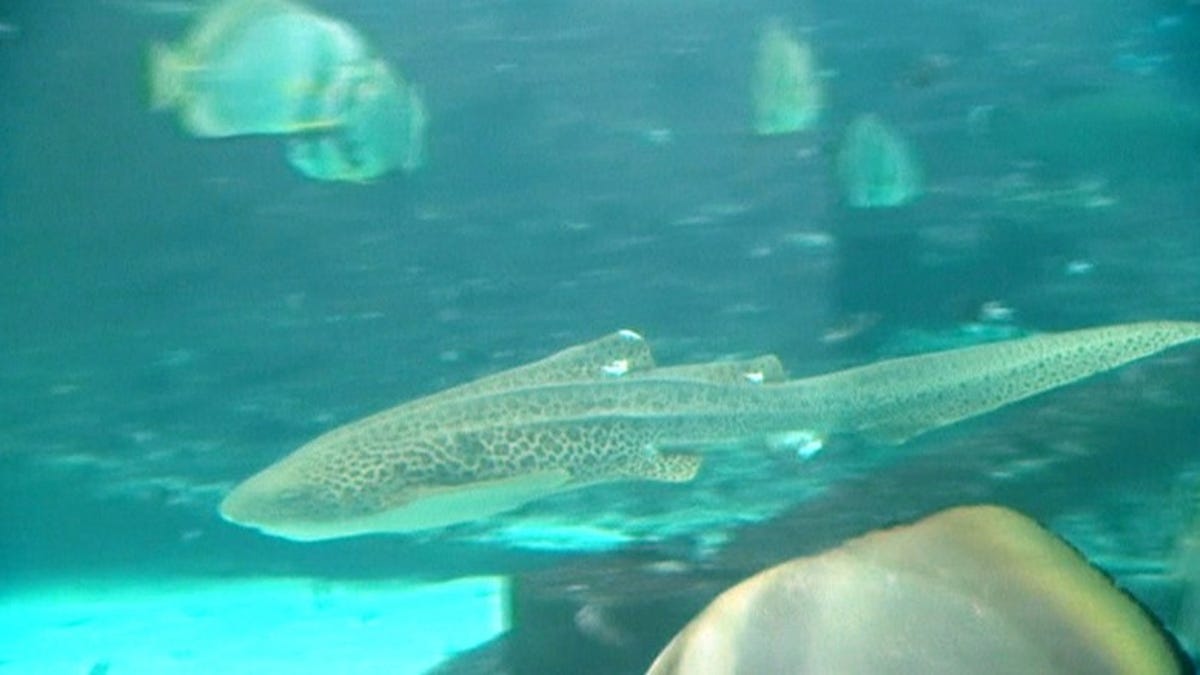Shark switches to asexual reproduction, gives male-less birth
The leopard shark is the first known to produce pups asexually after previously reproducing with a mate.
Did you know that sharks can reproduce asexually? It's true -- female sharks can produce offspring without a contribution from a male shark. This is called parthenogenesis, and has been observed in frogs, fish, lizards, plants, insects and birds, to name a few.
It's also been observed in several species of shark, but the case of a leopard shark (Stegostoma fasciatum, also known as a zebra shark) named Leonie at the Reef HQ Aquarium in Townsville, Australia, is unique. Previously, parthenogenesis in sharks had only been observed in female sharks that had had absolutely no contact with male sharks.
Leonie, on the other hand, did have contact with a male shark, most recently back in 2013. Moreover, she had reproduced with a male shark -- he was removed from the tank because they were producing more offspring than the aquarium could hold.
So Leonie marks the first documented case where a female shark has switched to parthenogenesis after breeding with a male. The paper has been published today in Scientific Reports.
Leonie produced 47 eggs during the 2014-2015 period, from which six embryos resulted, but no pups hatched. During the 2015-2016 period, she produced 41 eggs, from which four embryos resulted, and three living pups hatched between February and April of 2016.
"We thought she could be storing sperm but when we tested the pups and the possible parent sharks using DNA fingerprinting, we found they only had cells from Leonie," said study leader Christine Dudgeon of the University of Queensland's School of Biomedical Sciences. However, the pups are not clones of their mother. They only have half her genetic diversity.
For the leopard shark, which is listed as endangered by the International Union for the Conservation of Nature, this could be a breakthrough.
"This has big implications for conservation and shows us how flexible the shark's reproductive system really is. Leonie adapted to her circumstances and we believe she switched because she lost her mate. What we want to know now is could this occur in the wild and, if so, how often does it? One reason why we haven't seen it before could be because we haven't been looking for it."
These pups are still living, and are being monitored by the aquarium to determine if sharks produced asexually can also reproduce.
"You lose genetic diversity with generations of asexual reproduction, so we'll be seeing if these offspring can mate sexually themselves," Dudgeon said.
Batteries Not Included: The CNET team shares experiences that remind us why tech stuff is cool. Take a look here.
CNET Magazine: Check out a sampling of the stories you'll find in CNET's newsstand edition, right here.


